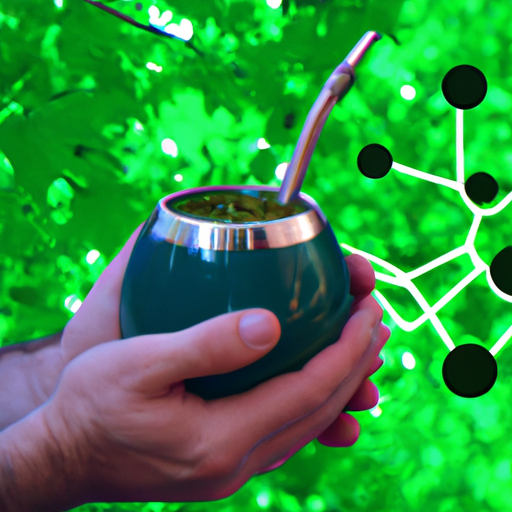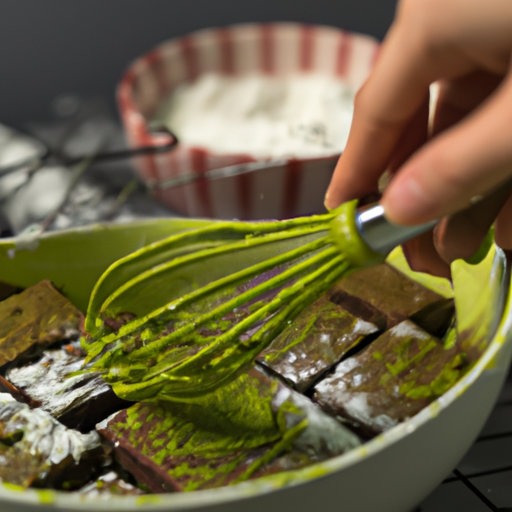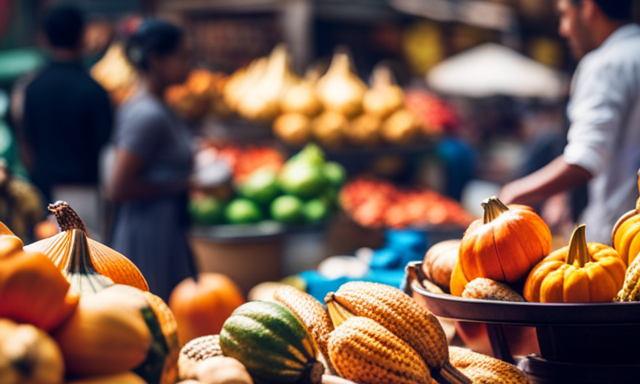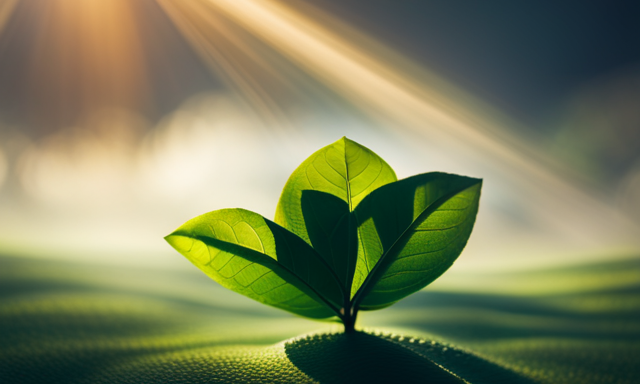I’ve enjoyed yerba mate for several years, and frequently people inquire about its caffeine levels. As an individual sensitive to caffeine, I recognize the significance of being aware of your intake to prevent unpleasant reactions such as feeling jittery or experiencing difficulties with sleep.
So, in this article, I’m going to break down exactly how much caffeine is in yerba mate and what factors can affect that amount.
First things first: what is yerba mate? Yerba mate is a traditional South American drink made from the leaves of the yerba mate plant. It’s known for its earthy flavor and energizing effects, making it a popular alternative to coffee or tea.
But how much caffeine does it actually contain? That’s where things get a little more complicated.
Key Takeaways
- The caffeine content in yerba mate varies based on the preparation method and leaf quality, with younger leaves and higher altitude plants having higher concentrations.
- Yerba mate contains a moderate amount of caffeine compared to other beverages, with less caffeine than coffee but more than tea.
- The recommended serving size of yerba mate is 50g, divided into 2-3 servings, with an average 8oz cup containing 30-50mg of caffeine.
- Exceeding the daily limit of 400mg of caffeine can have negative side effects, and other natural sources of caffeine include guarana and kola nuts.
What is Yerba Mate?
So, if you’re wondering what yerba mate actually is, it’s a popular South American drink made from the leaves of the yerba mate plant.
The history and cultural significance of yerba mate can be traced back to ancient indigenous tribes who used it for its medicinal properties. Today, it remains an important part of social gatherings in many South American countries.
To prepare yerba mate, loose leaves are placed inside a hollowed-out gourd and hot water is added. A special straw called a bombilla is used to sip the tea-like beverage directly from the gourd. This preparation method has become deeply ingrained in South American culture and is often shared among friends as a sign of hospitality.
The caffeine content of yerba mate varies depending on the preparation method and quality of the leaves used. In fact, some types of yerba mate contain more caffeine than coffee! But before we dive into that topic, let’s take a closer look at why this drink has remained so culturally significant throughout the years.
The Caffeine Content of Yerba Mate
When it comes to Yerba Mate, one of the key factors that people consider is its caffeine content. As someone who enjoys a good cup of Yerba Mate, I’ve often wondered about the factors that affect its caffeine levels.
In this discussion, we’ll take a closer look at the caffeine content of Yerba Mate and how it compares to other sources of caffeine.
Factors that Affect Caffeine Content
Factors affecting the caffeine content in yerba mate include the age of the plant, with younger leaves containing more caffeine than older ones. Additionally, the region where the plant is grown can also play a role in determining caffeine levels. Plants grown at higher altitudes tend to have higher concentrations of caffeine compared to those grown at lower elevations.
Many factors can influence how much caffeine is present in yerba mate. To better understand this, let’s take a look at a table that compares caffeine levels in different types of tea and coffee:
| Beverage | Caffeine Content (mg/8oz) |
|---|---|
| Yerba Mate | 30-50 |
| Green Tea | 25-35 |
| Black Tea | 50-90 |
| Drip Coffee | 95-200 |
As shown in the table above, yerba mate has a moderate amount of caffeine compared to other beverages. However, it’s important to note that individual responses to caffeine can vary widely and depend on factors such as genetics and tolerance level. In the next section, we will explore how yerba mate stacks up against other sources of caffeine.
Comparison to Other Caffeine Sources
You may be interested to learn how yerba mate compares to other sources of caffeine. Here are some quick comparisons:
- Yerba mate has less caffeine than coffee, but more than tea.
- Energy drinks typically have more caffeine per serving than yerba mate.
- Chocolate contains small amounts of caffeine, but not as much as yerba mate.
- Other natural sources of caffeine include guarana and kola nuts.
Comparing the effects of these different sources of caffeine is important when choosing which one to consume. While yerba mate provides a moderate amount of energy without the crash that can come with drinking too much coffee or an energy drink, there are also alternatives for those who want a lower dose of caffeine. Switching to tea or hot chocolate can provide a milder stimulant effect while still providing a warm and comforting beverage.
Moving on to how yerba mate is processed, it’s interesting to note that this traditional South American drink goes through several steps before it’s ready for consumption.
How Yerba Mate is Processed
Imagine the rich aroma of freshly harvested yerba mate leaves being roasted over an open flame, intensifying their flavor profile and preparing them for the next steps in processing.
Yerba mate processing involves a traditional method that has been used for centuries. The first step is to dry the leaves to prevent spoilage. This can be done by leaving them out in the sun or using hot air.
Once dried, the leaves are then aged for a specified period depending on their quality. During this time, they undergo a natural fermentation process that enhances their flavor and aroma.
After aging, the leaves are sorted according to size and shape before being roasted over an open flame or smoke-dried.
Yerba mate processing follows sustainability practices that prioritize environmental conservation and fair trade practices. Farmers use traditional methods that have been passed down from generation to generation, ensuring that the cultural heritage of yerba mate production remains intact.
With an understanding of how yerba mate is processed, let’s now explore how it’s brewed.
How Yerba Mate is Brewed
Grab your favorite mug and get ready to experience the cozy, comforting taste of a freshly brewed cup of yerba mate. Brewing techniques vary and can affect the flavor profile of your beverage. Here are three brewing methods you can try:
-
Traditional method: This involves using a hollowed-out gourd called a mate and a metal straw called a bombilla. The yerba mate is packed into the gourd, then hot water is added to it. The bombilla filters out the solids as you sip.
-
French press method: This is similar to making coffee in a French press. Put your yerba mate in the press, pour hot water over it, let it steep for 3-5 minutes, then press down on the plunger to filter out the solids.
-
Tea bag method: If you want an easy way to brew yerba mate without any special equipment, try using tea bags. Simply steep one or two bags in hot water for 3-5 minutes.
Flavor variations can also be achieved through different brewing techniques such as varying water temperature or steeping time. Experiment with different methods until you find what works best for you!
In the next section, we’ll explore how much yerba mate should be used in a single serving to achieve optimal caffeine content and flavor intensity without overdoing it.
The Amount of Yerba Mate Used in a Single Serving
Get ready to savor the perfect cup of yerba mate by using just the right amount for your single serving. The recommended yerba mate serving size is about 50 grams, which can be divided into two or three servings. This may vary depending on personal preference and strength of the yerba mate.
One important factor to consider when determining the amount of yerba mate to use is caffeine concentration. Yerba mate contains caffeine, a natural stimulant that can provide a boost in energy and mental alertness. However, excessive caffeine intake can lead to negative side effects such as sleeplessness, anxiety, and palpitations.
To avoid these issues, it’s essential to understand how much caffeine is in your yerba mate serving. On average, an 8-ounce cup of brewed yerba mate contains around 30-50 mg of caffeine. This means that consuming more than one or two cups per day may result in exceeding the recommended daily limit of 400 mg for healthy adults.
Understanding your caffeine intake is crucial when drinking yerba mate. In the next section, we’ll take a closer look at how to manage your consumption and enjoy all the benefits of this delicious traditional drink without compromising your health.
Understanding Your Caffeine Intake
To fully enjoy the energizing effects of yerba mate, I need to be aware of how much caffeine I’m taking in. Understanding caffeine tolerance is crucial to managing my intake and avoiding negative side effects such as jitteriness, anxiety, or insomnia. Here are some tips that can help me regulate my caffeine consumption:
-
Consider your daily caffeine limit: experts recommend consuming no more than 400mg per day, which equals about 3-4 cups of yerba mate.
-
Be mindful of other sources of caffeine: besides yerba mate, coffee, tea, or energy drinks also contain varying amounts of caffeine that can add up quickly.
-
Experiment with brewing methods and amount: using less yerba mate leaves or shorter steeping time can result in a milder brew with less caffeine.
By understanding my own sensitivity to caffeine and being mindful of my overall intake, I can still enjoy the benefits of drinking yerba mate without overdoing it.
Yerba mate contains beneficial compounds such as antioxidants and vitamins that can boost immunity, improve digestion, or mental clarity. In the next section, we’ll explore some more reasons why this South American beverage has gained popularity around the world.
Benefits of Yerba Mate
You’re probably wondering why anyone would put themselves through the trouble of drinking this ‘herbal tea’ that tastes like grass clippings. Well, let me tell you – there are some pretty impressive benefits to drinking yerba mate. For starters, it’s packed with antioxidants and contains a slew of vitamins and minerals such as vitamin C, potassium, and iron. Yerba mate has also been shown to boost energy levels without the jitters commonly associated with coffee.
In addition to its health benefits, yerba mate holds cultural significance in South America where it’s traditionally consumed from a gourd with a metal straw called a bombilla. The practice of sharing mate is seen as a symbol of friendship and community building. In fact, it’s not uncommon for people to gather around a shared gourd throughout the day in Argentina and Uruguay.
Here’s a breakdown of some key health benefits associated with drinking yerba mate:
| Benefit | Description | Source |
|---|---|---|
| Antioxidants | Helps prevent damage caused by free radicals | https://www.ncbi.nlm.nih.gov/pmc/articles/PMC3507301/ |
| Boosts Energy Levels | Provides caffeine without jitters or crashes | https://www.ncbi.nlm.nih.gov/pubmed/12373628 |
| Digestive Aid | Can improve digestion and reduce constipation symptoms | https://www.sciencedirect.com/science/article/pii/S1984006316300705 |
So if you’re looking for an alternative to coffee that offers both health benefits and cultural significance, give yerba mate a try! It’s important to note that not all yerba mates are created equal though – choosing the right one can make all the difference in taste and quality.
Choosing the Right Yerba Mate
If you want to fully appreciate the unique taste and health benefits of yerba mate, it’s important to choose a high-quality brand that suits your preferences.
When selecting yerba mate, consider the flavor profile that you prefer. Some brands are more bitter or smoky than others, while some have a sweeter taste. Additionally, consider whether you prefer traditional or flavored yerba mate.
Once you’ve found a flavor profile that suits your preferences, it’s important to prepare the yerba mate correctly. Traditional preparation involves steeping the leaves in hot water inside a gourd and drinking through a metal straw called a bombilla. However, there are also other methods such as using tea bags or brewing in a coffee maker.
Choosing the right brand and preparing yerba mate correctly can enhance your experience with this popular South American beverage. Not only does it offer unique flavors and aromas, but research suggests it may also provide several health benefits such as boosting energy levels and aiding weight loss.
Yerba Mate and Your Health
Now that we know how to choose the right yerba mate, let’s talk about its impact on our health. As a lover of this traditional South American beverage, I’m curious about its potential benefits and risks.
Firstly, yerba mate is known for its numerous health benefits. It contains antioxidants and anti-inflammatory compounds that can improve heart health, boost the immune system, and reduce cancer risk. Additionally, it’s been linked to improved mental clarity and focus due to its caffeine content.
However, it’s important to note that too much caffeine can have negative effects on our bodies. Yerba mate contains about 30-50mg of caffeine per serving, which is less than coffee but still significant. Overconsumption of caffeine can lead to anxiety, jitters, insomnia, and other side effects.
Furthermore, there are concerns about the possible link between yerba mate consumption and certain cancers due to its high temperature when consumed traditionally through a metal straw called a bombilla.
Overall, while yerba mate has many potential health benefits, it should be consumed in moderation like any other food or beverage for optimum wellbeing.
-
Benefits of Yerba Mate
-
Contains antioxidants
-
Boosts immune system
-
Improves mental clarity
-
Potential Risks of Consuming Too Much Yerba Mate
-
Negative effects from excessive caffeine intake
-
Possible link to certain cancers
Frequently Asked Questions
Is Yerba Mate safe for pregnant women to consume?
Oh my goodness, I can’t stress enough how important it is for pregnant women to be cautious about what they consume during pregnancy. As a healthcare professional, I’ve seen the devastating effects that can occur when expecting mothers don’t take their health seriously.
When it comes to yerba mate specifically, there are concerns regarding caffeine intake and potential risks to the developing fetus. However, research has also shown that yerba mate can provide health benefits such as improved digestion and increased antioxidant activity.
So while it may be tempting to indulge in this popular beverage during pregnancy, it’s best to err on the side of caution and speak with your healthcare provider before consuming any amount of yerba mate or other caffeinated beverages. Your baby’s health should always come first.
Can Yerba Mate be used as a weight loss aid?
As someone interested in weight loss, I’ve researched the potential benefits of Yerba Mate consumption.
Studies suggest that Yerba Mate may aid in weight loss by boosting metabolism and increasing fat oxidation during exercise.
The caffeine content of Yerba Mate is also thought to play a role in its weight loss effects. However, it’s important to note that consuming high amounts of caffeine can have negative side effects such as anxiety and heart palpitations.
Additionally, Yerba Mate should not be relied on as the sole method for weight loss, but rather used in combination with a healthy diet and regular exercise routine.
Overall, while more research is needed, incorporating moderate amounts of Yerba Mate into one’s diet may potentially aid in achieving weight loss goals.
Can Yerba Mate be consumed with milk or other additives?
Well, I never thought I’d be asking myself this question, but can yerba mate actually be consumed with milk or other additives? The answer is yes, it can!
While traditionalists might scoff at the idea of adding anything to yerba mate, many people find that adding milk (or even honey) can help tame the bitterness of this South American beverage. Of course, you’ll want to experiment with different flavor combinations to find what works best for you.
But don’t worry about ruining the benefits of yerba mate – studies have shown that adding milk doesn’t significantly affect its antioxidant properties. So go ahead and enjoy your yerba mate latte without any guilt!
How does the caffeine content in Yerba Mate compare to other caffeinated beverages?
When comparing the caffeine content in yerba mate to other caffeinated beverages, it’s important to note that yerba mate contains less caffeine than coffee but more than tea. The average cup of brewed coffee contains approximately 95 milligrams of caffeine, whereas a standard serving of yerba mate typically has around 30-50 milligrams.
However, studies have shown that the unique combination of compounds found in yerba mate can provide additional benefits for athletic performance compared to other sources of caffeine. Yerba mate has been shown to increase endurance and reduce fatigue during exercise, making it a popular choice among athletes and fitness enthusiasts.
Overall, while yerba mate may not have as much caffeine as coffee, its unique properties make it a valuable addition to any wellness routine.
Is Yerba Mate addictive or habit-forming?
As someone who regularly drinks yerba mate, I understand the concerns about its addictiveness. While there’s evidence to suggest that the caffeine content in yerba mate can lead to dependence and withdrawal symptoms, it’s important to note that this is true of most caffeinated beverages.
However, long-term effects of yerba mate consumption are less clear. Some studies have linked excessive consumption to an increased risk of certain cancers, while others suggest potential benefits for cardiovascular health and cognitive function.
Ultimately, like any substance, moderation is key when it comes to enjoying yerba mate without experiencing negative consequences.
Conclusion
In conclusion, yerba mate is a beloved traditional drink that offers a unique caffeine kick and plenty of health benefits. As someone who values natural energy sources and strives to maintain good health, I find yerba mate to be an excellent choice.
The rich cultural history behind this drink only adds to its appeal, as does the fact that it can be enjoyed in so many different forms. When I sip on my favorite blend of yerba mate, I feel connected not just to the plant itself, but also to the community of people who have been enjoying it for centuries.
Whether you prefer your yerba mate hot or cold, sweetened or unsweetened, there’s no denying the power of this earthy beverage. So next time you’re in need of a little pick-me-up, consider reaching for a cup of yerba mate and take comfort in knowing that you’re fueling your body with something truly special.










